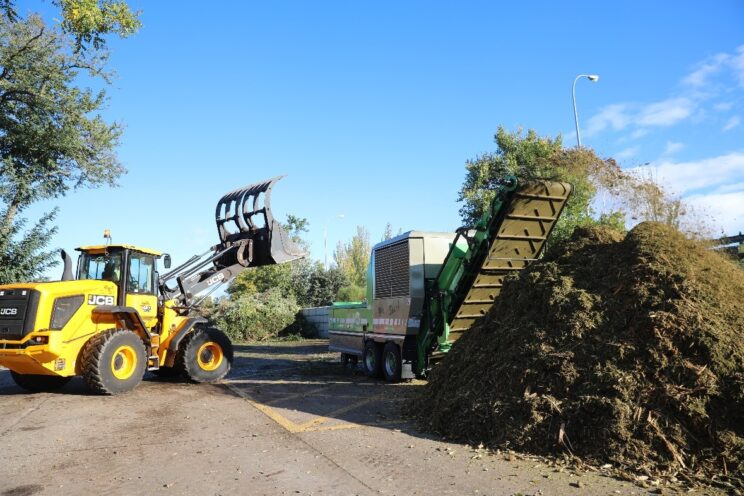
Composting is a technique that mimics the natural fermentation process that occurs in the soil of a natural site such as a forest, scrubland or grassland. It is a biotic process, which means it requires the action of living beings to decompose organic matter. It is also an aerobic process, meaning that it needs oxygen for the fermentation to take place. The end result of composting is a product called compost or natural fertilizer, suitable for use as a substrate for cultivation.
Over recent years, we have heard about composting thanks to the arrival of the brown bin used for organic waste, and to the treatment carried out at the Valdemingómez Technology Park for recycling. Community composting projects in neighbourhoods, often associated with kitchen gardens, are also on the rise. These projects represent a sustainable activity for recycling organic waste, and they also play a social role as they are carried out by different groups working together.
But these are not the only ways in which composting can be carried out in the city. Since 1997, the city of Madrid has had the Migas Calientes composting plant, located between the M-30 and the Manzanares river. This is a concrete platform, with a surface area of over 14,000 m2, with installations and machinery suitable for composting processes.
This plant is specifically engaged in the composting of plant waste produced by gardening work carried out in parks and gardens. All in all, the city has an area of more than 30,000 ha of green areas and some 280,000 trees, which produce a significant amount of plant waste that needs to be properly managed.
In the past, this plant waste was left to accumulate in controlled storehouses, but thanks to this plant, compost or natural fertilizer can now be produced and used as a fertilizer to improve the soil quality of the city’s parks.
Although the composting process is natural, there are differences compared to the fermentation that occurs in a natural environment, such as the time factor. In a natural environment, this fermentation process can last a year, while at the plant it takes only 6 months. The oxygen and water required for the process at the plant are supplied mechanically, unlike in the natural environment. In addition, the plant has machinery to shred incoming plant waste, an action that in the natural environment is performed by scavengers and decomposers.
The composting process at the Migas Calientes plant is carried out in different areas:
- Reception and storage area: this area receives, stores and weighs the vegetable waste that arrives in the lorries.
- Crushing area: this is for the machinery that shreds the incoming vegetable waste, and where microorganisms begin to multiply.
- Fermentation area: in this area, the initial microorganisms are replaced by others that develop at a higher temperature. The organic matter is transformed and as a result, the temperature rises. This process takes approximately 4 weeks.
- Maturation area: a slow fermentation takes place and the temperature of the mixture drops. During the months it spends here, the mixture is turned over to allow aeration, and the temperature and oxygen levels are monitored using manual probes.
- Sifting and storage area: here, refining and sifting take place, to obtain an end product that can have different calibres. Part of the end product is used for the soil in parks and gardens, and another part is reintroduced into the fermentation phase of the plant itself.
If you want to learn more about Migas Calientes composting plant, you can do so here.
You can also follow us on social networks, on Instagram @conrde_madrid, and on Twitter @AciertaOrganica, where we post every type of sustainable activity such as composting that takes place in the city.
Taking care of the city and promoting sustainability is easy if we all do it!
